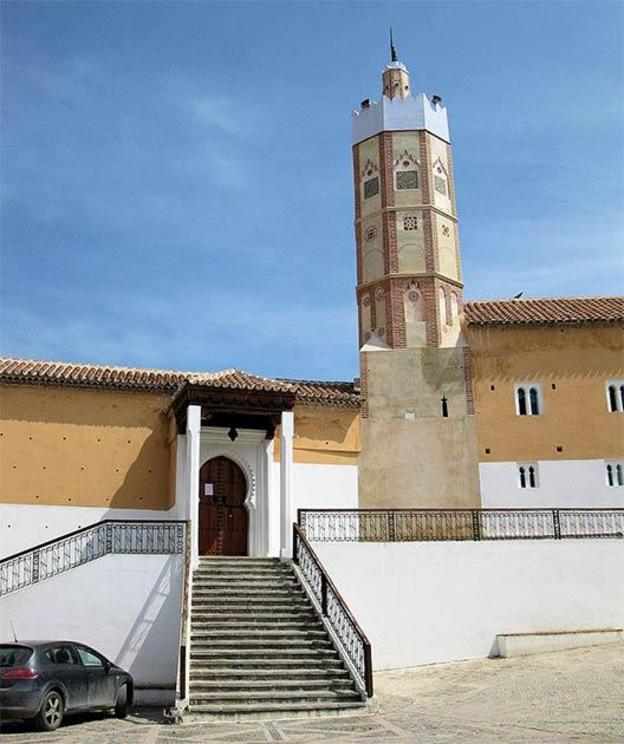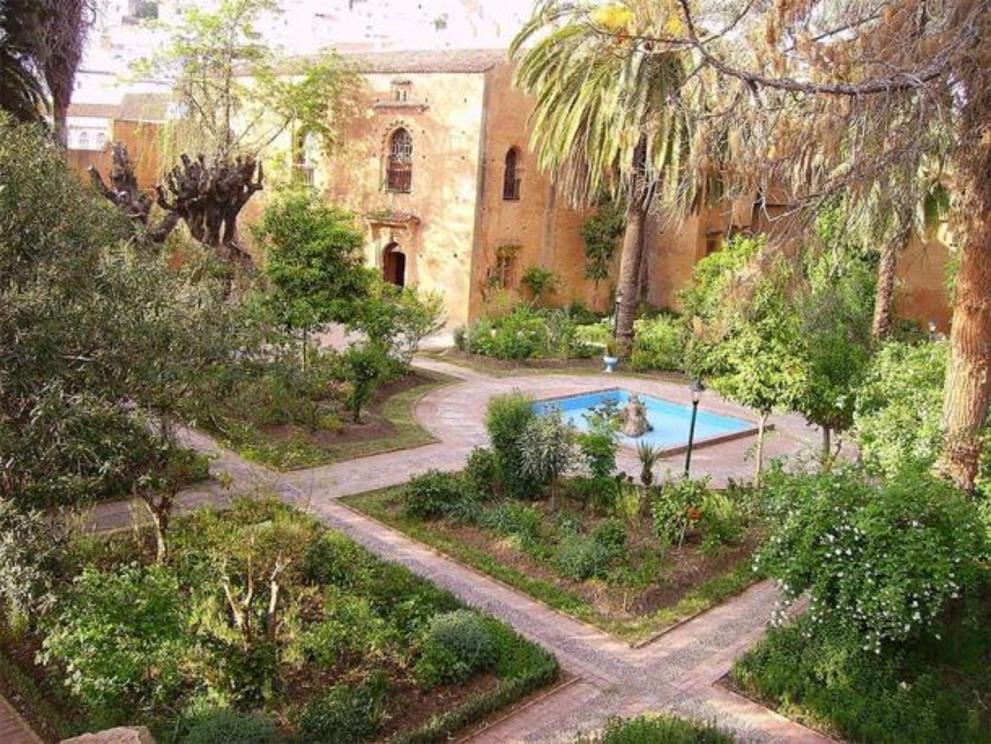Chefchaouen: Morocco's blue pearl city
Amazing street and architecture of Chefchaouen, Morocco, North Africa
Chefchaouen (also known as Chaouen), Morocco's Blue Pearl city, is renowned for its old, traditional blue rinsed structures, casting the city in a luminescent colored hue. Situated high in the Rif Mountains, Morocco's blue pearl fairytale landscape is only two hours from the big city of Tangier. However, because of its position in the mountains, Morocco's Blue Pearl is a unique historical and cultural destination that also offers visitors nature experiences as well as other unique adventures.
 Chefchaouen, Morocco's Blue Pearl, a city of history, culture and natural beauty.
Chefchaouen, Morocco's Blue Pearl, a city of history, culture and natural beauty.
History Suggests Morocco's Blue Pearl Was Initially White
Chefchaouen was founded in 1471 by native leader Abu al-Hassan Ali ibn Moussa ibn Rashid al-Alami as a site providing defense against the Portuguese who were trying to takeover Morocco. The city was intended as a fortress from which the Moroccans could fight against their opponents.
The Portuguese began invading northern Africa following the Reconquista, the period in Spanish history wherein Christians opposed all non-Christian forces (predominately Muslims) lasting from the 8 th to 14 th centuries. The Portuguese were attempting to expand their power, and gain control of Morocco’s valuable grain, sugar, cattle, fish, hide, and honey commerce and trade. As the neighboring cities of Ceuta and Tangier fell to the invading Portuguese armies, Chefchaouen was in many ways a last stand fortress in the Rif region of Morocco. Alfonso V of Portugal, who continued his grandfather’s attempt to gain control of Morocco from local leaders, became Chefchaouen’s biggest threat.
The population of Chefchaouen grew with an influx of refugees from Muslim and Jewish cultures who were running from forcible conversion at the hands of the Christians in Granada, Spain. This was known as the Expulsion of Jews from Spain and Portugal, both of which occurred in the 1490s. From here, Chefchaouen’s population grew until the small, mountain city was a force to be reckoned with.
Interestingly, the city’s founder was descended from Idriss I, considered by many historians to have begun the first Moroccan dynasty, himself possibly a descendent of the Muslim prophet Muhammad. As such, the creation of Chefchaouen can be considered valuable in the story of Morocco’s independent future.
Chefchaouen and its neighboring area—called the Rif to refer to the mountains in the north—remained under the control of the Spanish and French governments until the early 20th century. It was part of the temporarily declared Republic of Rif, c. 1921, which was dissolved by the French and Spanish five years later. Chefchaouen and Morocco eventually gained their independence from European powers in the 1950s, as a result of the Revolution of the King and the People led by Mohammed V. By 1957, Mohammed V was the king of an independent Morocco.
 A closer look at Chefchaouen, Morocco's Blue Pearl.
A closer look at Chefchaouen, Morocco's Blue Pearl.
Chefchaouen’s Cultural Attractions
The white-washed houses of Chefchaouen, which later took on bluish shades, are thought to have first been built by Jewish and Muslim refugees who made homes for themselves in the fifteenth century. Reasons for the colored blue walls, however, vary though the tradition of painting the town blue continues into the present day. Some say the coloring only appeared during the Second World War, when the Jews were fleeing from Hitler; others say it was painted blue by Jews four hundred years earlier, when they were fleeing the Spanish Inquisition of the 15 th century AD. For others the “tradition of painting buildings blue…reminded them [the villagers] of the sky and the presence of God.” Another consideration is that the pale blue color serves to keep the houses cool in the hot Moroccan summers. In this these latter cases the attribution of the coloring is not given to a specific group of individuals. Yet another claim is that blue is actually a natural preventive against mosquitos and, by extension, malaria. Regardless, Chefchaouen is known as “the Blue Pearl” of Morocco, and it is a hotspot for tourists and travelers alike.
Chefchaouen’s Historical Attractions
Though difficult to get to because of its mountainous location, many make the journey throughout the year to visit Chefchaouen’s blue-shrouded world. The city is not very large and can easily be explored in a single day. Interestingly, the city is organized as a maze. With small streets, and buildings the same color at every turn, it would be easy to lose oneself in the small, photogenic environment. Even the doors are often painted blue, causing entryways to blend in with the surrounding walls of the homes and shops. The shops themselves can be considered eclectic, and the streets are often flooded with the items and wares from the bazaars’ local arts, crafts, and other souvenirs.
Like most cities in Morocco, the native Arabic language is beneficial to know for price haggling or learning more about the process by which the local artisans create their products. Because of the sheer number of outdoor shops and bazaars available, and the overall small size of the city, Chefchaouen shopping can be very close-quartered. Visiting during COVID-19 would certainly not be in one’s best interest. However, when travel reopens, and the rules of social distancing fade away, the wealth of local craftsmen and their wares will certainly become a popular tourist experience again.
 The Grand Mosque of Chefchaouen
The Grand Mosque of Chefchaouen
The mosques and museums of the city are also paramount for any visit to Chefchaouen, a predominately Muslim culture . A visit to the city’s Grand Mosque is a must. Situated in the historical district of the town (called a medina), in the Plaza Uta El Hammen, it is in the cultural center of the city. The mosque was built around the time of the city’s founding and is attributed to the founder himself. The mosque, which can be reached on foot or by car, is a testament to the Muslim community that continues to thrive in Chefchaouen. Interestingly, the mosque is not only the seat of religious power in the city and it is frequently used by the local leaders for meetings and public readings of decrees. Thus, a visit to the mosque can be more than just a historical and religious learning opportunity. Though the mosque has been restored more than once over the years, it continues to benefit from its long historical existence. A second mosque, the Spanish Mosque of Chefchaouen, was built in the 1920s but was never used. It sits on an eastern hill and overlooks the city.
Another place of significance within the city is its local ethnographical museum: the Kasbah Museum of Chefchaouen. Also located in the Plaza Uta El Hammen in the city’s historic district, the museum was constructed by Pasha Ahmed Errifi to protect and display the unique culture of the city. Items that can be viewed in this museum include “popular art, sculptures, objects realized in wood, leather and stone, pots traditional clothes, nuptial boxes, ancient weapons of this region of Morocco that were important in his [Pasha Ahmed Errifi’s] moment.” Overall, the focus of the museum is clearly focused on unique, Moroccan craftsmanship and skills in various media.
 Interior garden in the Kasbah of Chefchaouen
Interior garden in the Kasbah of Chefchaouen
Furthermore, and perhaps more intriguing, the original Kasbah palace and defense structure, both intact, are part of the museum. The Kasbah was Chefchaouen’s original defense: a “walled enclosure…designed, with military purposes and spaces designed to house the emir and his family, subjects, soldiers and prisoners.” The Kasbah has grown over the years along with the city, and has expanded to also house an elaborate interior garden which can be viewed by visitors, as well as “a central pond, with towers and other elements surrounding them and flanking the wall.” A visit to the museum therefore offers visitors a historical journey, as the foundation of the structure is the original fortress itself. In summary, the Kasbah is an invaluable opportunity to see the origins of Chefchaouen in its modern setting.
Chefchaouen’s Nature Attractions
If one is interested in stepping beyond the city and exploring the natural environment, there is no shortage of adventurous experiences in the natural world beyond Chefchaouen’s blue borders. In the Rif Mountains there is a marked (though not perfectly) trail leading hikers to Jeb al-Kalaa, the highest peak. This hike is worth the trip as it provides a phenomenal view of the blue city from its highest point, allowing the viewer to look out over the city as if it was a sea of its own making. The trip itself takes about nine hours and is definitely not for the faint of heart.
More adventurous visitors can continue seeing Chefchaouen’s natural beauty in the Talassentane National Park, which was created to protect the endangered fir trees of Morocco. Littered with incredible waterfalls and cascading rivers, the scenery of the park is stunning. Beyond the park boundaries are trails leading to the waterfalls of Akchour, hidden within vibrant green forests, as well as a bridge known as God’s Bridge. Akchour is also a small town and the waterfalls were named after it. God’s Bridge, carved from the rocks into a beautiful stone arch, seems to be a creation of the gods and thus is aptly named.
 The waterfalls of Akchour
The waterfalls of Akchour
The natural landscapes beyond Chefchaouen also include a series of caves that can be explored. Though not yet fully mapped this network of roughly one thousand caves in the Rif Mountains are made from soft minerals such as dolomite and limestone. The caves, of which the best known is called Kef Toghobeit, are deep due to the solubility of the stones from which they are made, and each year they deepen due to extensive rainfall. Kef Toghobeit is the deepest cave in Morocco and the third deepest in Africa.
Finally, a visit to one of Chefchaouen’s hashish farms should also be considered. While not actually legal in Morocco, this traditional crop and product has over one hundred years of local history. Farmers will often show visitors how they “produce hashish from kif, the THC crystals extracted from marijuana.” They then sell that product to the visitors as though the process is the same as a legal business transaction. As the region of the Rif Mountains is the primary location of the marijuana farms, a trip to these farm while visiting the “Blue Pearl of Morocco” is not unusual or uncommon.
When in Morocco, A Trip to Chefchaouen Is a Travel Must
Chefchaouen’s culture is as rich and well-rounded as its historical background. One should not visit the country of Morocco and not take at least a day to meander through its beautiful, blue-washed streets. Although the city is small, it is full of places, people, and sites to see and experience both in the city and beyond in the Rif Mountains. A trip through the mountains is as stunning as a walk through the city’s unique streets. When planning your next trip, consider a detour through the Moroccan mountains to visit Chefchaouen, Morocco's Blue Pearl city.

